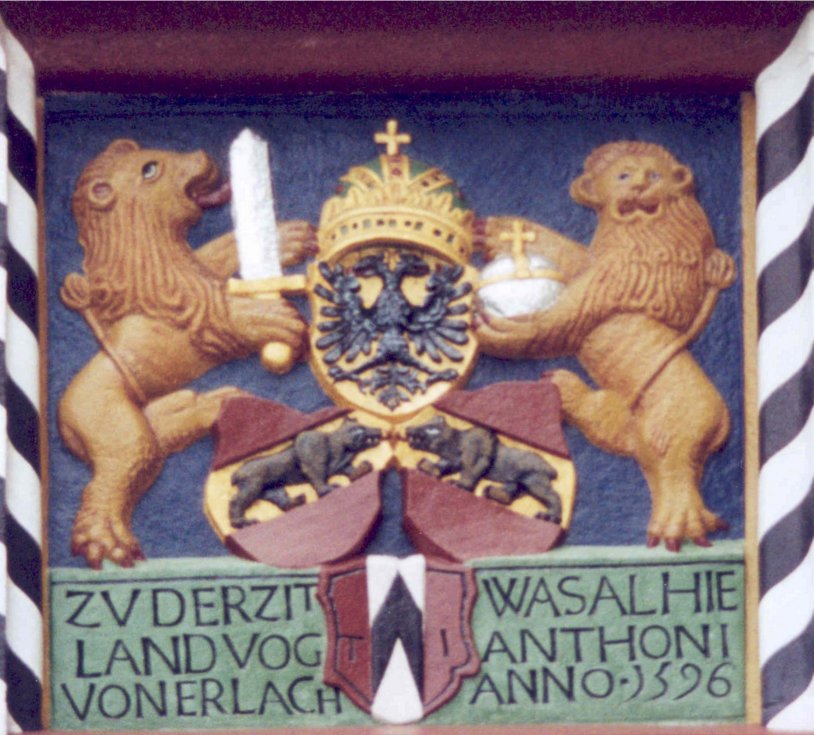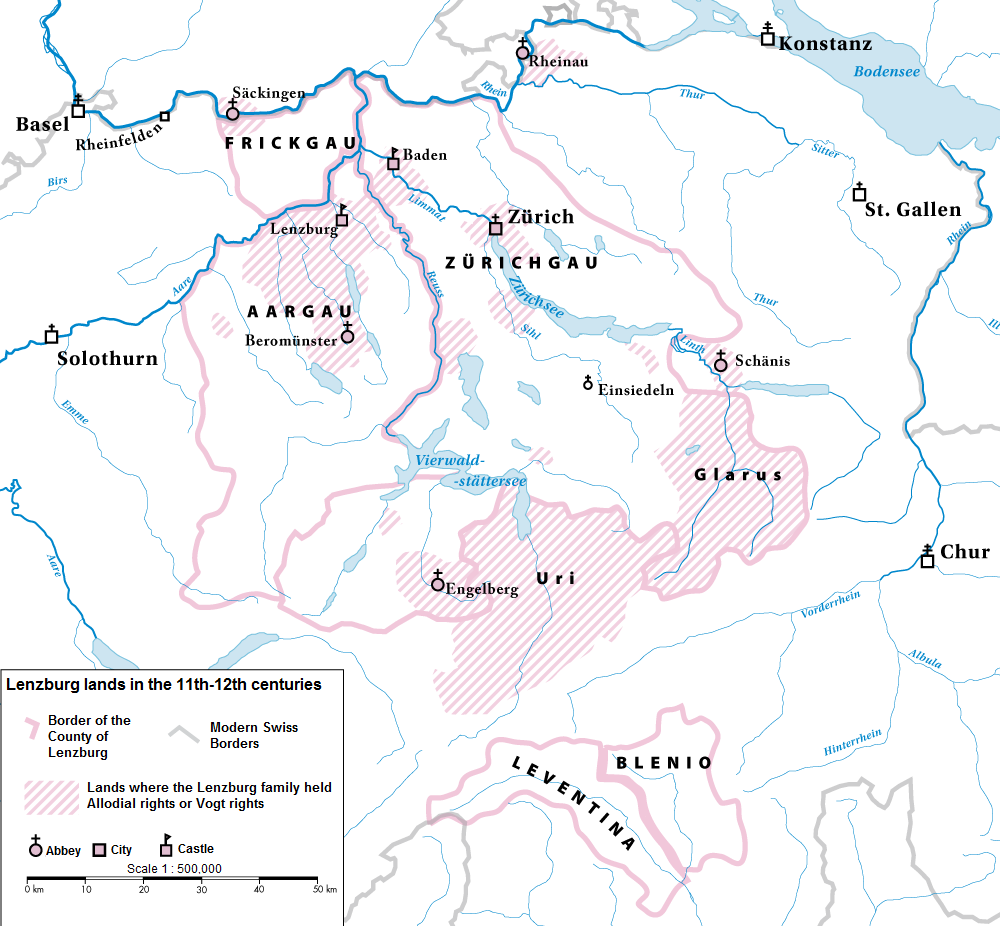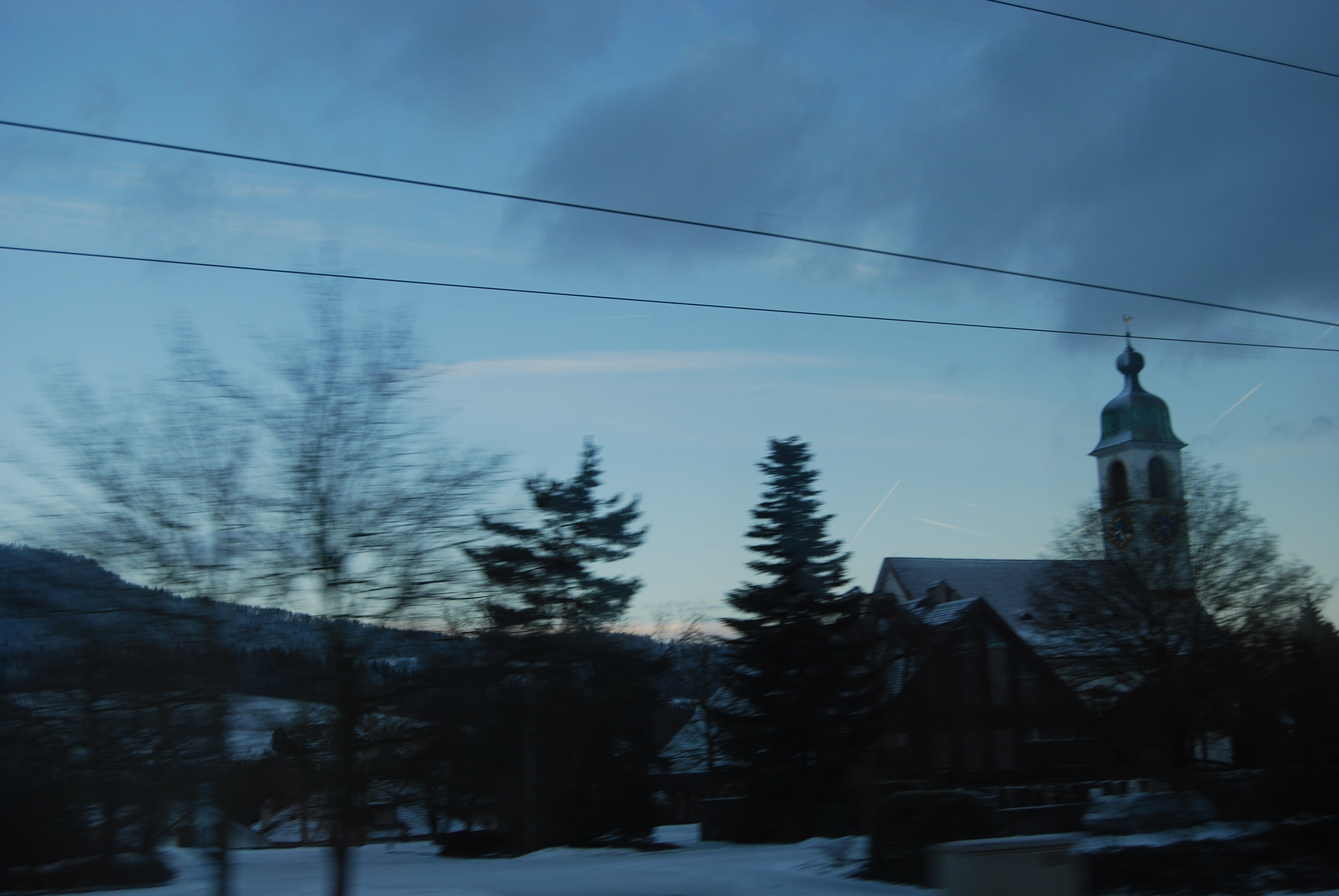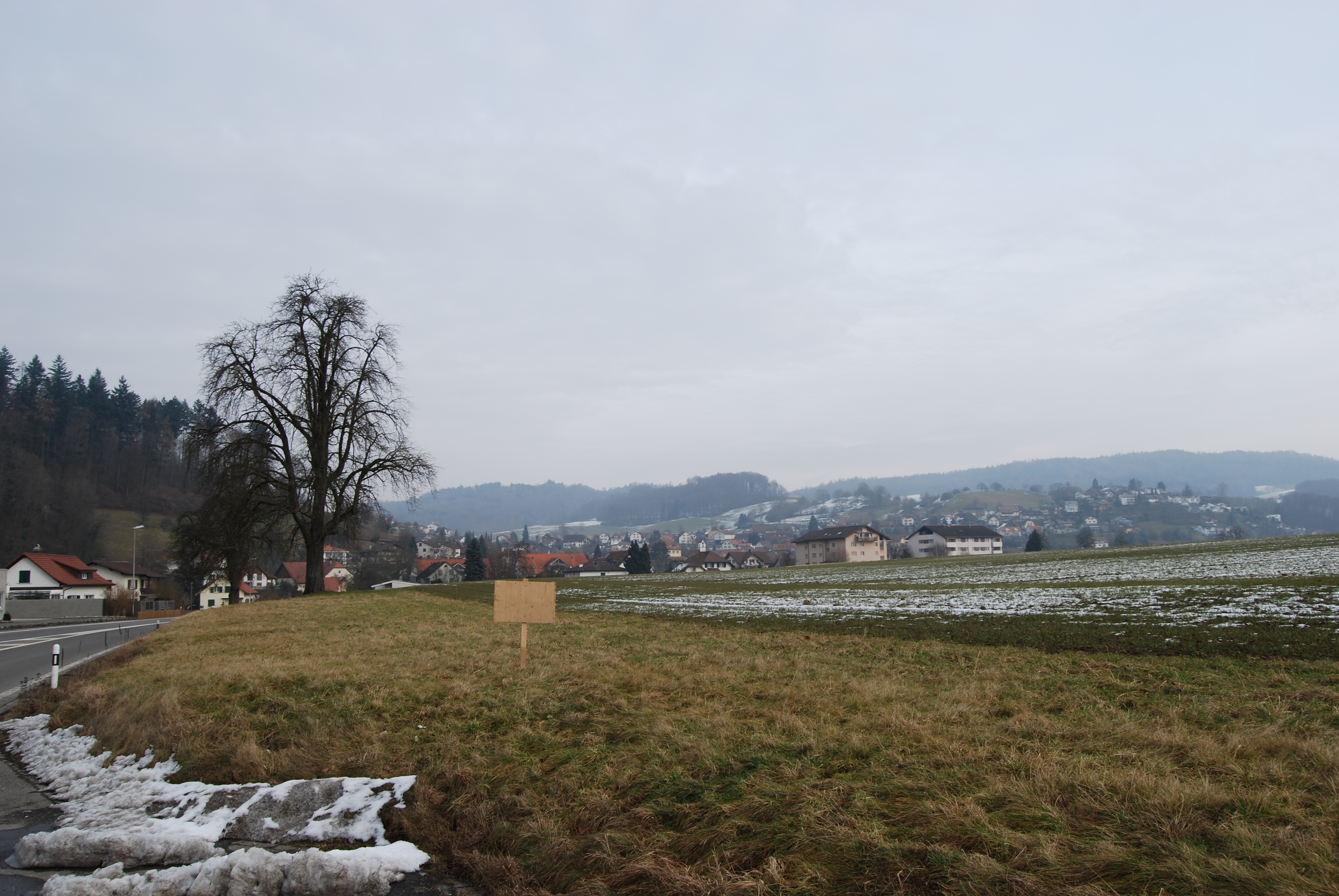|
Lenzburg
Lenzburg is a town in the central region of the Swiss canton Aargau and is the capital of the Lenzburg District. The town, founded in the Middle Ages, lies in the Seetal valley, about 3 kilometres south of the Aare river. Lenzburg and the neighbouring municipalities of Niederlenz and Staufen have grown together in an agglomeration. History A Neolithic grave field of the Cortaillod culture has been discovered on the ''Goffersberg'' (close to the Lenzburg Castle) dating from 4300 - 3500 BCE. A Roman theater was uncovered when a motorway was built in 1964. It was part of a small settlement with 500 inhabitants that existed for approximately 200 years. The settlement was abandoned in the 3rd century. In the 5th and 6th centuries, an Alamanni settlement existed. Lenzburg is first mentioned in 924 as ''de Lencis''. In 1036, Lenzburg Castle was used for the first time as seat for the Count of Lenzburg, then an important lord. The house however died out in 1173, and the castle was t ... [...More Info...] [...Related Items...] OR: [Wikipedia] [Google] [Baidu] |
Count Of Lenzburg
The Counts of Lenzburg (also Counts of Baden by the early 12th century) were a comital family in the Duchy of Swabia in the 11th and 12th centuries, controlling substantial portions of the '' pagi'' of Aargau and Zürichgau. After the extinction of their male line in 1173, their lands were distributed between the houses of Kyburg, Zähringen and Hohenstaufen. Subsequent Habsburg expansion into former Lenzburg territories were one of several factors that led to the formation of the Old Swiss Confederacy in the late 13th century. History The Lenzburg family was first mentioned in 1077 in connection with Lenzburg Castle, though they were probably descended from the Carolingian Count Hunfrid of Rhaetia through a female line to the Lords of Schänis, the religious vogt over Schänis Abbey. Through this line, Ulrich (died 972) is usually considered the first member of the Lenzburg family. The Lenzburgs were related to several other noble houses including the Counts of Habs ... [...More Info...] [...Related Items...] OR: [Wikipedia] [Google] [Baidu] |
Lenzburg Castle
Lenzburg Castle (german: Schloss Lenzburg) is a castle located above the old part of the town of Lenzburg in the Canton of Aargau, Switzerland. It ranks among the oldest and most important of Switzerland. The castle stands on the almost circular castle hill (altitude: 504 m), which rises approximately over the surrounding plain but is only about in diameter. The oldest parts of the castle date to the 11th century, when the Counts of Lenzburg built it as their seat. The castle, its historical museum and the castle hill with its Neolithic burial grounds are listed as heritage sites of national significance. History The prominent hill was already a settlement site in prehistoric times. For example, in 1959 a Neolithic gravesite was uncovered in the carpark. There have also been small discoveries from the Roman and Alemannic eras. A legend tells that there was once a dragon living in a cave in the hillside, who was defeated by two knights, Wolfram and Guntram. The grateful ... [...More Info...] [...Related Items...] OR: [Wikipedia] [Google] [Baidu] |
Lenzburg District
Lenzburg District is a district of the Canton of Aargau in Switzerland, lying at the center of the canton. The district capital is the town of Lenzburg. It has a population of (as of ). Geography The Lenzburg district has an area, , of . Of this area, or 41.5% is used for agricultural purposes, while or 33.2% is forested. Of the rest of the land, or 19.6% is settled (buildings or roads). Coat of arms The blazon of the district coat of arms is ''Argent a Hurt.'' Demographics Bezirk Lenzburg has a population () of . , 19.7% of the population are foreign nationals.Statistical Department of Canton Aargau -Bereich 01 -Bevölkerung accessed 20 January 2010 Economy there were 24,407 workers who lived in the district. Of these, 18,072 or about 74.0% of the residents worked outsi ...[...More Info...] [...Related Items...] OR: [Wikipedia] [Google] [Baidu] |
Lenzburg (district)
Lenzburg District is a district of the Canton of Aargau in Switzerland, lying at the center of the canton. The district capital is the town of Lenzburg. It has a population of (as of ). Geography The Lenzburg district has an area, , of . Of this area, or 41.5% is used for agricultural purposes, while or 33.2% is forested. Of the rest of the land, or 19.6% is settled (buildings or roads). Coat of arms The blazon of the district coat of arms is ''Argent a Hurt.'' Demographics Bezirk Lenzburg has a population () of . , 19.7% of the population are foreign nationals.Statistical Department of Canton Aargau -Bereich 01 -Bevölkerung accessed 20 January 2010 Economy there were 24,407 workers who lived in the district. Of these, 18,072 or about 74.0% of the residents worked outsid ...[...More Info...] [...Related Items...] OR: [Wikipedia] [Google] [Baidu] |
Hendschiken
Hendschiken is a municipality in the district of Lenzburg in the canton of Aargau in Switzerland. History Hendschiken is first mentioned in 1160 as ''Hentschikon''. During the Middle Ages, the major landowners in Hendschiken included Muri Abbey, Säckingen Abbey and St. Urban Abbey as well as the Counts of Lenzburg and Habsburg. In the 14th century most of the land went to the Habsburg owned Königsfelden Abbey. The right to administer low justice was acquired between 1264-1273 by the Lords of Hallwyl, who held it until 1798. In 1415 the village came under the control of Bern and became part of the Lenzburg district (german: Oberamt Lenzburg). After it became a village in the 15th century, the farmers were allowed to freely choose their '' Twingherren'' from among any member of the Hallwyl family. With the Act of Mediation in 1803, Hendschiken joined the newly created Canton of Aargau and became part of the Lenzburg district. Initially it belonged to the Staufberg par ... [...More Info...] [...Related Items...] OR: [Wikipedia] [Google] [Baidu] |
Rupperswil
Rupperswil is a municipality in the district of Lenzburg in the canton of Aargau in Switzerland. History A partially preserved Roman era tile kiln from the 2nd Century was discovered in 1911. There is also evidence of the emergence of a late- Alamanni village in the 8th Century. The modern village of Rupperswil is first mentioned in 1173 as ''Rubeswile''. It belonged to the realm of Lenzburg and passed from the Lenzburg family to the Kyburgs then in 1273 to the rule of the Habsburgs. After the conquest of the Aargau in 1415 it became part of the Bernese District (german: Hochgerichtsbezirk) of Lenzburg. Around the beginning of the 13th to the mid-14th Century, the Lords of Rubiswile, a Kyburg Ministerialis family (unfree knights in the service of another lord) is mentioned. They were the first '' Twingherren'' of Rupperswil. The ''Twingherrschaft'' was acquired between 1295-1312 by the Lords of Baldegg which then passed to the Lords of Reinach, and finally to the L ... [...More Info...] [...Related Items...] OR: [Wikipedia] [Google] [Baidu] |
Ammerswil
Ammerswil is a municipality in the district of Lenzburg in the canton of Aargau in Switzerland. It is located southeast of the town of Lenzburg. History While some scattered Neolithic items have been discovered in Ammerswil, the first known settlement was an Alamannic farmhouse. The village of Ammerswil is first mentioned in 924 as ''Onpretiswilare''. In 1306 it was mentioned as ''Ombrechtzwile''. It was ruled successively by the Counts of Lenzburg, Kyburg and Habsburg, and then in 1415 by the city-state of Bern. Starting in the 13th century, the rights to low justice and tithes were held by the Lords of Hallwyl. In the 14th century, these rights changed hands several times (the Freiherr of Fridingen, Freiherr of Grünenberg and the Lords of Ballmoos). In 1484 these rights transferred to Bern, which annexed Ammerwil into the court of Othmarsingen in the Lenzburg district (''Oberamt Lenzburg''). The Late Romanesque aisleless church was expanded in 1640. It has a ba ... [...More Info...] [...Related Items...] OR: [Wikipedia] [Google] [Baidu] |
Niederlenz
Niederlenz is a municipality in the district of Lenzburg in the canton of Aargau in Switzerland. History The center of the village comes from a middle Bronze Age settlement and a later Roman era farm. However, the modern village of Niederlenz is first mentioned in 924 as ''de Lencis''. In 1261-64 it was mentioned as ''Nider-Lenz''. The high justice rights were held by Schloss Lenzburg until 1433 when those rights, along with the rights to low justice, were purchased by Bern. Later, the low justice rights reverted to the four villages of Niederlenz, Hunzenschwil, Rupperswil and Staufen. In 1480 village was incorporated with a local government. The village mill was built before 1461 and was pawned by Hans Heinrich of Rinach and then sold in 1486 to Hans von Hallwyl. It was in the possession of the Kull family for generations. It was originally part of the Staufberg parish. The village got its own church in 1949 and in 1990 became its own parish. Geography Niederlenz ... [...More Info...] [...Related Items...] OR: [Wikipedia] [Google] [Baidu] |
Staufen, Switzerland
Staufen is a municipality in the district of Lenzburg in the canton of Aargau in Switzerland. Geography Staufen has an area, , of . Of this area, or 40.1 % is used for agricultural purposes, while or 31.7 % is forested. Of the rest of the land, or 26.6 % is settled (buildings or roads).Swiss Federal Statistical Office-Land Use Statistics 2009 data accessed 25 March 2010 Of the built up area, industrial buildings made up 2.2 % of the total area while housing and buildings made up 14.8 % and transportation infrastructure made up 4.5 %. Power and water infrastructure as well as other special developed areas made up 4.2 % of the area. Out of the forested land, all of the forested land area is covered with heavy forests. Of the agricultura ... [...More Info...] [...Related Items...] OR: [Wikipedia] [Google] [Baidu] |
Aargau
Aargau, more formally the Canton of Aargau (german: Kanton Aargau; rm, Chantun Argovia; french: Canton d'Argovie; it, Canton Argovia), is one of the 26 cantons forming the Swiss Confederation. It is composed of eleven districts and its capital is Aarau. Aargau is one of the most northerly cantons of Switzerland. It is situated by the lower course of the Aare River, which is why the canton is called ''Aar- gau'' (meaning "Aare province"). It is one of the most densely populated regions of Switzerland. History Early history The area of Aargau and the surrounding areas were controlled by the Helvetians, a member of the Celts, as far back as 200 BC. It was eventually occupied by the Romans and then by the 6th century, the Franks. The Romans built a major settlement called Vindonissa, near the present location of Brugg. Medieval Aargau The reconstructed Old High German name of Aargau is ''Argowe'', first unambiguously attested (in the spelling ''Argue'') in 795. The term ... [...More Info...] [...Related Items...] OR: [Wikipedia] [Google] [Baidu] |
Egliswil
Egliswil is a municipality and village in the district of Lenzburg in the canton of Aargau in Switzerland. History It appears that there was a Roman estate in Egliswil, though the only archeological evidence is a single Roman era grave. The modern village of Egliswil is first mentioned in 924 as ''Egirichiswilare''. In 1331 the Habsburgs pledged the low justice rights to the Lords of Hallwyl. They merged Egliswil into the court of Hallwil. In 1677 they raised the, now much larger, village into its own independent court. The '' Untervogtei'' was placed in the ''Haus zum Sonnenberg'' a stone building from 1694. The romanesque aisleless church, with a churchtower from the 16th century, was a branch of the church in Seengen. In addition to grain, the main businesses of the village were vineyards (since the 17th century) and home working for the cotton industry (from 18th century). From the 1950s, small-scale industry moved into the edge of the village. Geography Egliswil is l ... [...More Info...] [...Related Items...] OR: [Wikipedia] [Google] [Baidu] |
Möriken-Wildegg
Möriken-Wildegg is a municipality in the district of Lenzburg in the canton of Aargau in Switzerland. History The area was settled in the Late Bronze Age. The hilltop settlement on the ''Kestenberg'' had at least two phases (approximately 1050 to 1000 BC and 850 BC.). In the more recent settlement, the buildings were built with logs and traces of constructions and traces of bronze casting were discovered. A Roman era wall at the ''Lehmgrube'' river indicates that there was a Roman farm in the area. Möriken-Wildegg is first mentioned in 1283 as ''de Moerinchon''. In the High Middle Ages the village belonged to the Lords of Holderbank and then later to the '' Twingherrschaft'' of Wildegg. Religiously, into the 16th Century the inhabitants of Möriken-Wildegg belonged to the parish of Staufberg. In 1565 they became part of the Holderbank parish. A chapel dedicated to Saint Antonius was mentioned in the 13th Century. It was demolished in 1949 and replaced by a new buildin ... [...More Info...] [...Related Items...] OR: [Wikipedia] [Google] [Baidu] |








